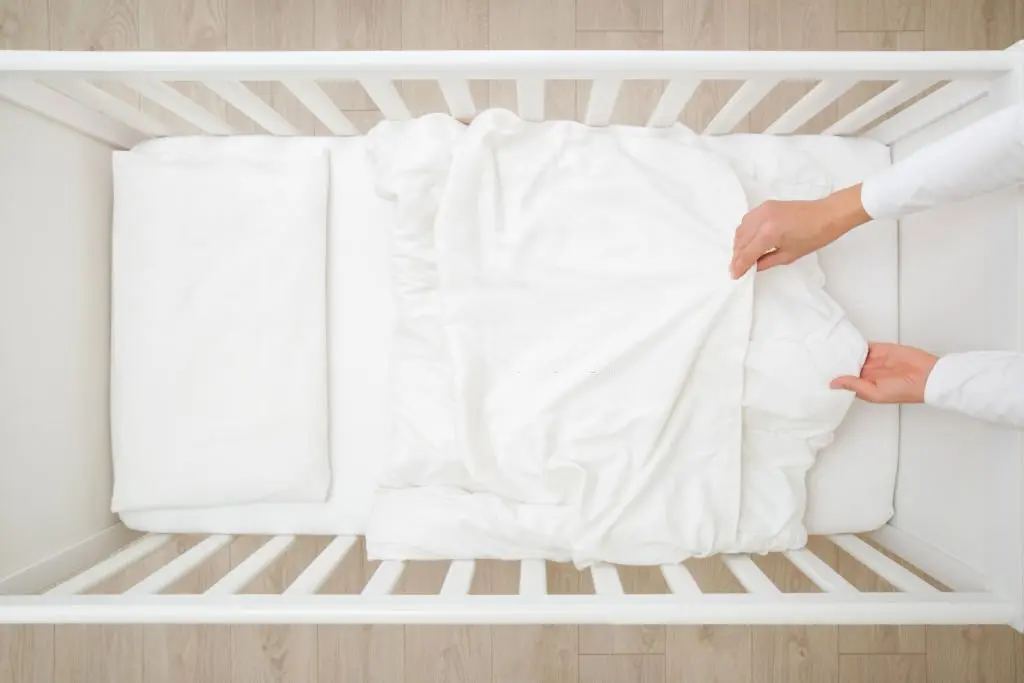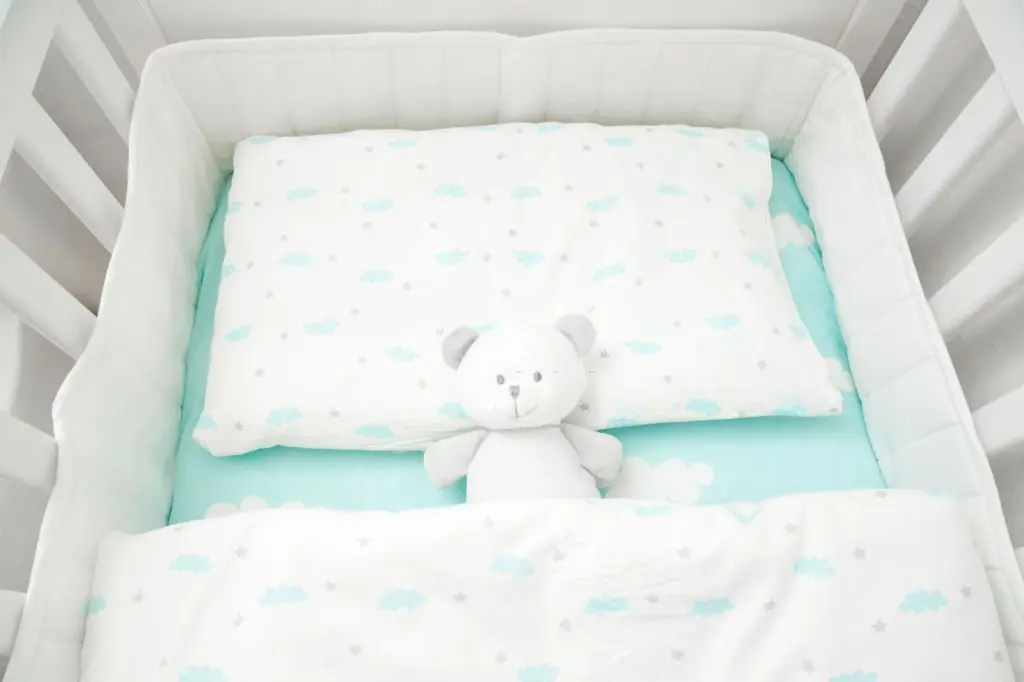When Should I Start Using Baby Bedding

Introduction to When Should I Start Using Baby Bedding
As a first-time parent, your primary focus is to ensure your infant’s safety and comfort, especially during sleep. However, determining the appropriate timing to introduce baby bedding items like blankets can be complex due to potential safety hazards associated with them.
Is it safe for babies to sleep with blankets?

It’s crucial to understand that for newborns and infants, using blankets in the crib is not recommended.
The American Academy of Pediatrics (AAP) advises against using loose bedding, including blankets, pillows, and stuffed animals in your baby’s sleeping environment for at least the first year to avoid the risk of Sudden Infant Death Syndrome (SIDS) and other sleep-related hazards.
Risks of introducing a blanket too quickly
The primary risk of introducing a blanket too early is suffocation or SIDS. Babies can easily get tangled in the blanket or pull it over their face, making it difficult for them to breathe. That’s why it’s essential to wait until your child is old enough to understand and respond to these risks before introducing a blanket.
Is swaddling safer for babies than loose blankets?
Yes, swaddling is generally considered safer than using loose blankets because it keeps the baby snug without posing a suffocation risk.
However, improper swaddling can also cause problems, so it’s essential to learn the correct technique. Remember, once a baby starts to show signs of rolling over, swaddling should be discontinued to prevent them from rolling onto their stomach while swaddled.
When can a baby sleep with a blanket?

Typically, it’s safe to introduce a blanket to your child’s sleep routine when they reach 12 months of age. At this point, they have the motor skills to move blankets away from their face, reducing the risk of suffocation.
How can I make sure my baby Is warm without a blanket?
You can keep your baby warm without using a blanket in several ways:
Layer your baby’s clothing: Dress your baby in layers to help keep them warm. However, be careful not to overdress your baby, which can lead to overheating, another risk factor for SIDS.
Adjust bedroom temperature: The ideal room temperature for a baby to sleep is between 68-72°F (20-22°C). You can use a room thermometer to ensure the room is at a comfortable temperature.
Wrap your baby in a swaddle or sleep sack: Swaddling or using a sleep sack can keep your baby warm without posing the risks that loose blankets do.
Safe sleep guidelines for babies
To ensure the safest sleeping conditions for your baby, always follow these guidelines:
Always place your baby on their back to sleep: This is the safest position for your baby to sleep and significantly reduces the risk of SIDS.
Put your baby to sleep in a crib: Your baby should have their own sleeping space, ideally, a crib, bassinet, or play yard that meets current safety standards.
Use a firm mattress that fits the crib: The mattress should be firm to reduce the risk of suffocation and should fit snugly within the crib with no spaces around the edges.
Keep the crib free of objects, Including bedding: Until your baby is at least 12 months old, their crib should be free from loose bedding, pillows, stuffed animals, and other objects that could be a suffocation risk.
Do Not Sleep With Your Baby in Your Bed: Bed-sharing increases the risk of SIDS, suffocation, and strangulation.
Set a Consistent Bedtime Routine: Regular bedtime routines can help signal your baby that it’s time to sleep, improving their sleep quality.
Conclusion on when should I start using baby bedding
Your child’s safety is paramount, and while blankets can provide comfort and warmth, they should be introduced only when it’s safe – typically after the first year. Until then, consider safer alternatives like dressing in layers, adjusting room temperature, and using swaddles or sleep sacks.
Also Read:
- What Type of Bedding is Best for a Baby
- How to Make Baby More Comfortable in Crib
- How to Prevent Baby From Hitting Head on Crib
FAQs on when should I start using baby bedding
Can I use bumper pads in my baby’s crib?
No, the AAP strongly advises against bumper pads as they pose a risk of suffocation, strangulation, and entrapment.
When can my baby sleep with a stuffed animal?
Similar to blankets, it’s generally safe to introduce a stuffed animal when your baby is around 12 months old.
What can i do if my baby is cold at night?
Try using a wearable blanket or sleep sack to keep your baby warm. If you’re concerned about your baby’s temperature, check their chest or back – these areas should feel warm, not hot or cold.
Can a 1-year-old sleep with a blanket?
The American Academy of Pediatrics (AAP) recommends waiting until your baby is at least 12 months old before introducing a blanket for sleeping.
At this age, your child has enough motor skills to move a blanket away from their face, which reduces the risk of suffocation.
When can babies sleep with stuff in their bed?
Similar to the recommendation for blankets, it’s generally safe to allow a baby to sleep with soft objects like stuffed animals or a toddler pillow once they reach age 1.
Prior to this age, these items should be kept out of the crib to reduce the risk of SIDS, suffocation, and other sleep-related accidents.
When can babies start using blankets and pillows?
The AAP recommends introducing blankets and pillows to your baby’s sleep environment only after they turn 1 year old.
Until then, the crib should be kept bare to reduce any potential hazards. After the first year, you can gradually introduce these items, always supervising their initial interactions to ensure safety.
What age do you give babies bedding?
Comprehensive bedding, including sheets, blankets, and pillows, should only be introduced when your baby is around 12 months old.
Until then, it’s best to stick with a firm mattress fitted with a tight sheet and to avoid other loose items in the crib. Remember, a baby’s sleep environment should prioritize safety over aesthetics or perceived comfort.
Please always consult with a healthcare provider if you have specific questions or concerns about your baby’s sleep environment.
The recommendations above align with guidelines provided by the AAP and are subject to change based on new research or individual healthcare provider advice.
